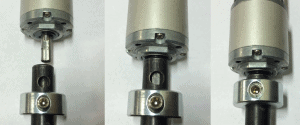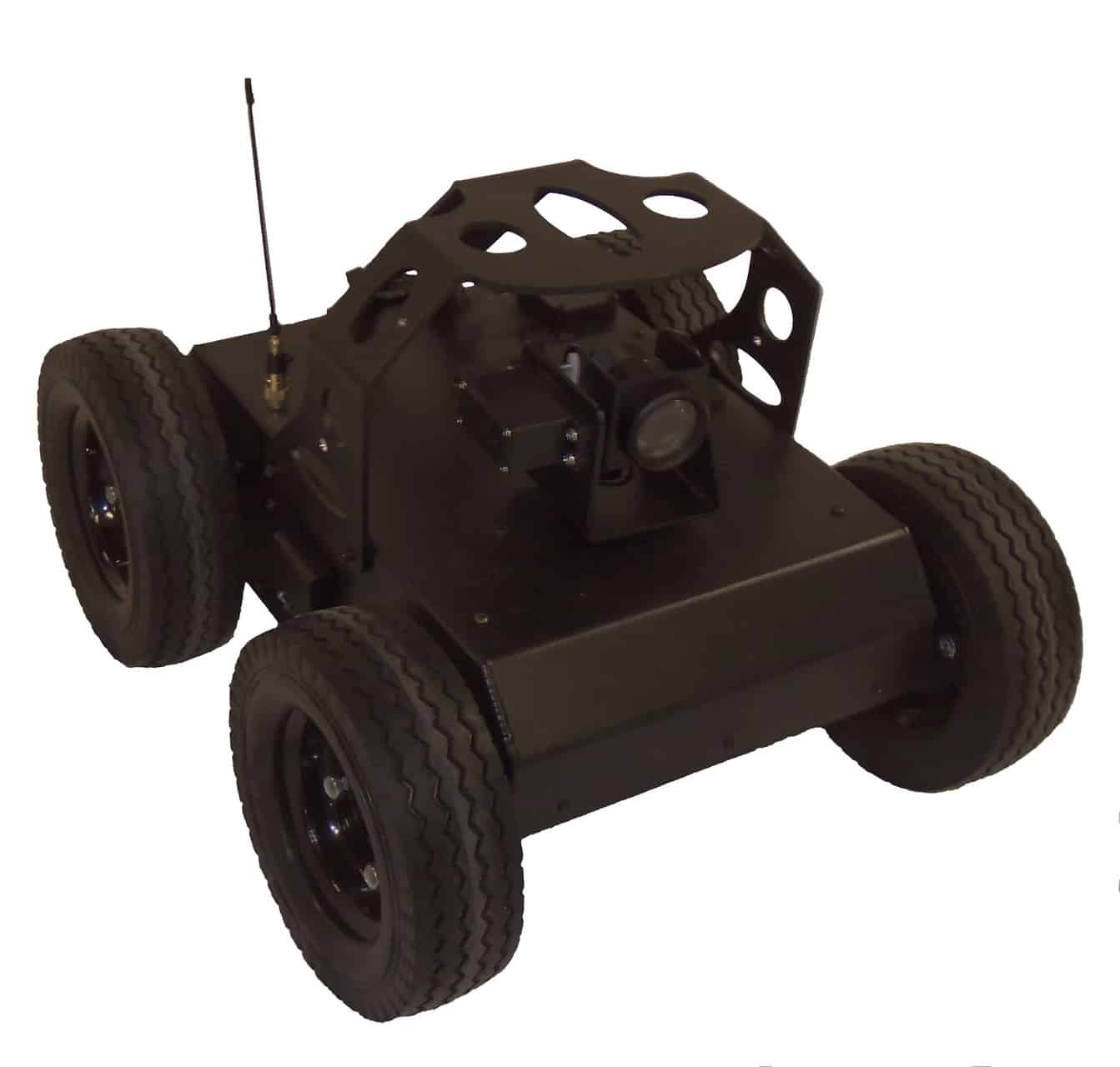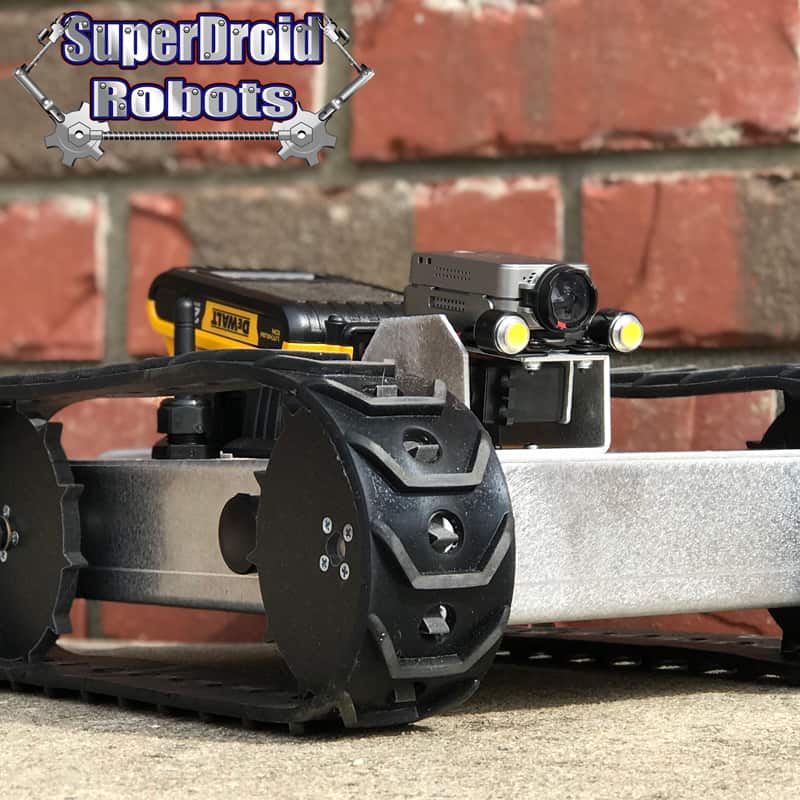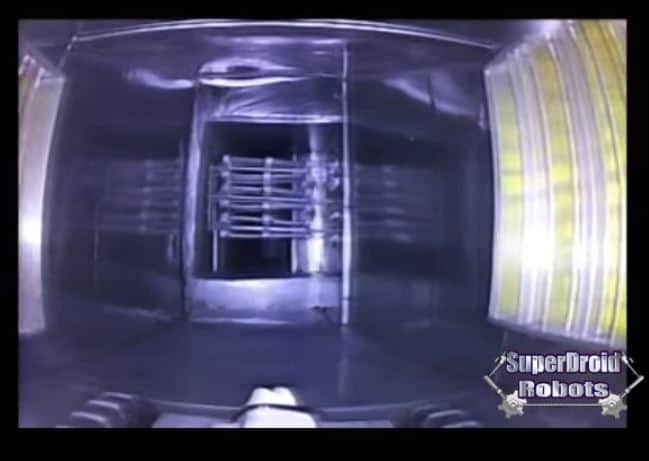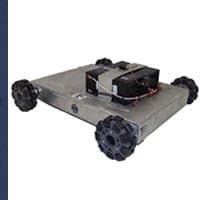Today’s Tech Thursday topic is an explanation of how we make our shafts, sprockets and gears couple to motor output shafts. There are several different methods we use depending on the application. Here’s how we have the most success.
- Light Duty Torque Applications – Set screw to the flat side of the shaft.
All of our standard motors have a D shaft. Either 6mm, 8mm, or 12mm. We drill out/bore the correct hole size into the shaft, sprocket or gear. We have the equipment here to get this done, and offer custom sizes on all of the sprockets we sell. The picture below shows a 6mm bore in a wheel and shaft set we sell also.
We have a 1/2” steel shaft with a 6mm hole, another hole (1/4”) drilled in perpendicular to that hole through one side of the shaft. We can then use a ½ lock collar and set screw to go through the shaft and into the motor D flat.
The shaft is slid all the way on the motor and notice you can see the flat spot of the D motor shaft. It is important that you get the flat spot when you tighten the setscrew down. Be sure to use loc-tite on the set screw to keep it from backing out.
We also use a slightly longer setscrew than that one that comes with the lock collar to keep good thread engagement.
Medium Duty Torque Applications – Roll pin through motor shaft.
Another method we use is a roll pin to lock onto the motor shaft. Most of the time this is how we couple sprockets to the motor because it is a very reliable link. You have to drill through the sprocket and the motor shaft and knock a roll pin through both pieces to get a good lock.Here is a picture of a roll pinned sprocket onto a 12mm motor shaft. The sprocket was drilled out to 12 mm and slid onto the motor shaft.
We used a 1/8” drill bit and drilled through the entire assembly. Then a roll pin was pounded into the hole and formed a very secure coupling.
Notice how we put the roll pin through the part of the motor shaft that did not have the flat on it.
- Heavy Duty High Torque Applications – machine slot into sprocket, flat bar welded into place.
The final way we couple the motor D shafts onto our assemblies is to essentially make a D slotted hole to fit the motor shaft. To do this we first drill the sprocket out to the desired hole size.
We used a 1/8” drill bit and drilled through the entire assembly. Then a roll pin was pounded into the hole and formed a very secure coupling.roll pinned motor shaft
We then machine down a slot into the sprocket and fit a piece of flat bar into the slot. We then weld the flat bar into place forming a large flat spot in the inside of the sprocket hole.
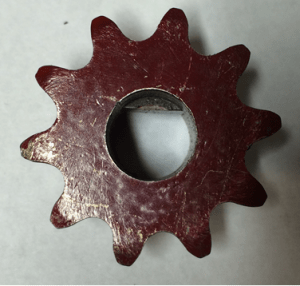 The picture shows a sprocket that fits onto a D shaft very securely. We use this with our highest torque applications. It is difficult and time consuming for us but is the best method to transfer the amount of torque we need from a D shaft to a sprocket.
The picture shows a sprocket that fits onto a D shaft very securely. We use this with our highest torque applications. It is difficult and time consuming for us but is the best method to transfer the amount of torque we need from a D shaft to a sprocket.
#techthursday #gearmotors #motorcoupling #Dshaft #setscrew #loctite


